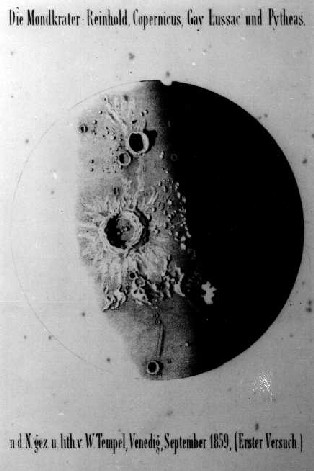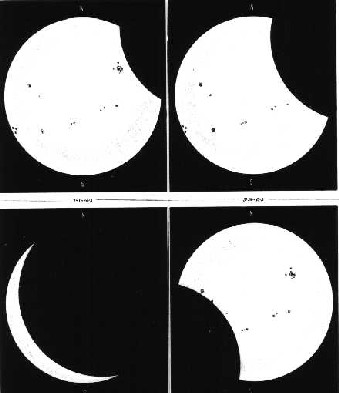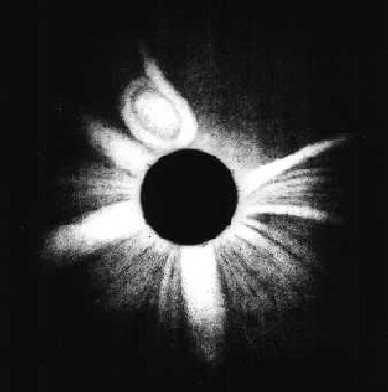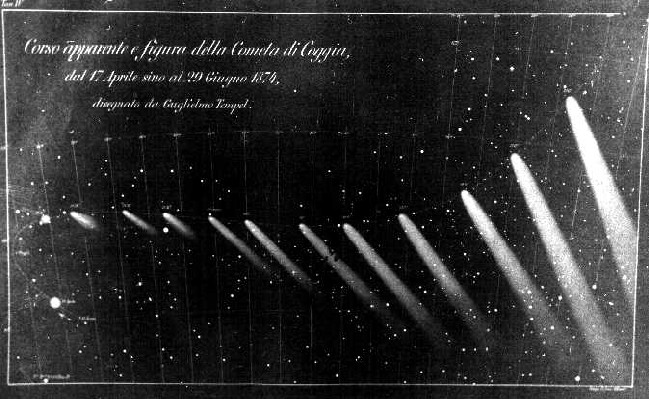|
When Wilhelm Tempel was born in the 19th century photography was just becoming popular. 1826 the Frenchman Niepce (1765-1833) had already succeeded in landscape photography with eight hours of exposure time. But because of the fact that the pictures were not durable and lost colour quickly, Daguerre (1789-1851) is considered the real inventor of photography. While he invented a more practical technology, his method and continuing improvements in the following years still required long exposure times. Because of this, the appearance of star clusters, cosmic nebulas and distant galaxies could only be recorded by drawings. To reproduce them for book printing a lithography or a copper engraving was made. Even in his childhood Tempel's drawings indicated his future as a lithographer. And therefore he became well-known as an excellent drawer of the sky: |
|
|
|
|
|
Circular part of the moon surface around |
The large Orion Nebula in 1861. |
|
|
|
|
Cover phase of the total eclipse of the sun |
Sun corona during a total eclipse of the sun |
|
|
|
|
Here Tempel observed the movement and dynamics of the bright comet Coggia in 1874. |
|
Willkommen auf Lutz Clausnitzers Internetseiten




